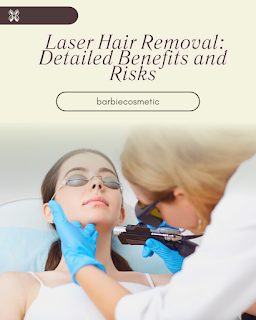Laser hair removal has surged in popularity as a cosmetic procedure, celebrated for its effectiveness and ease. However, like all cosmetic treatments, it presents both advantages and potential drawbacks. Understanding these can help those considering laser hair removal make an informed decision.
How Does Laser Hair Removal Work?
Laser hair removal employs concentrated beams of light that target the melanin in hair follicles. The heat from the laser damages the follicle, inhibiting or delaying future hair growth. While it may not guarantee permanent hair removal, it often results in significant long-term hair reduction.
Benefits of Laser Hair Removal
1.Long-lasting Results
Unlike shaving, waxing, or using depilatory creams, laser hair removal can significantly reduce hair growth over time. After several sessions, many people experience months or even years without noticeable hair regrowth.
2. Precision and Speed
Lasers can target dark, coarse hairs while leaving the surrounding skin unharmed. Each pulse of the laser takes only a fraction of a second and can treat multiple hairs simultaneously, making the procedure relatively quick.
3. Reduced Ingrown Hairs
Laser hair removal often helps prevent the development of ingrown hairs, a common issue with waxing and shaving. By damaging the follicle directly, it reduces the chance of hairs curling back into the skin.
4.Smoother Skin
Without regular shaving or waxing, the skin often feels smoother and softer. Additionally, there is less skin irritation and fewer cuts or burns associated with traditional hair removal methods.
5. Cost-Effective Over Time
Although the initial cost can be high, many people find it economical in the long run. The reduction in need for razors, waxing sessions, and other products adds up over the years.
Potential Risks and Drawbacks
1. Skin Irritation
Temporary discomfort, redness, and swelling are common immediately after treatment. These side effects usually disappear within a few hours to a couple of days.
2. Pigment Changes
Some people may experience hyperpigmentation (darkening of the skin) or hypopigmentation (lightening). These changes are usually temporary but can sometimes be long-lasting, especially in people with darker skin tones.
3. Risk of Burns and Blisters
If the procedure is done incorrectly or the device settings are unsuitable for a person’s skin type, there is a risk of burns, blisters, and even scarring.
4. Limited Effectiveness on Certain Hair Types
Laser hair removal is most effective on people with light skin and dark hair. It is less effective on light blonde, red, gray, or white hair, because the laser targets melanin, which these hair colors have less of.
5. Multiple Sessions Required
Achieving optimal results usually requires multiple sessions spaced weeks apart. Maintenance treatments may also be needed to keep hair regrowth under control.
Important Considerations Before Starting
- Consult a Professional: Always choose a certified and experienced practitioner to minimize risks.
- Skin and Hair Assessment:Discuss your skin type and hair color with the professional to set realistic expectations.
- Avoid Sun Exposure:It’s recommended to avoid sun exposure before and after treatment, as tanned skin increases the risk of side effects.
- Follow Aftercare Instructions: Proper aftercare helps reduce the chance of irritation and complications.
Conclusion
Laser hair removal offers numerous benefits, such as longer-lasting smoothness, fewer ingrown hairs, and convenience. However, it also poses risks like skin irritation, pigmentation changes, and is less effective on certain hair types. With careful research and by choosing a qualified specialist, many people find laser hair removal to be a safe and valuable option for long-term hair reduction.






.png)






0 Comments